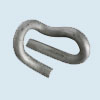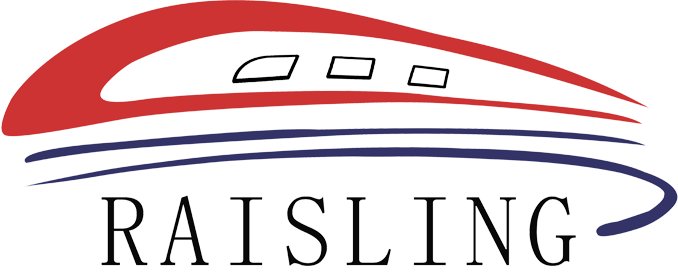How Rail Elastic Clips Significantly Reduce Noise in Train Travel
Aug 12,2025
How Rail Elastic Clips Contribute to Noise Reduction in Train Travel Table of Contents 1. Introduction to Rail Elastic Clips 2. The Importance of Noise Reduction in Train Travel 3. How Rail Elastic Clips Work for Noise Reduction 4. Types of Rail Elastic Clips and Their Applications 5. Benefits of Using Rail Elastic Clips 6. Case Studies: Real-World Applications of Rail Ela

How Rail Elastic Clips Contribute to Noise Reduction in Train Travel
Table of Contents
- 1. Introduction to Rail Elastic Clips
- 2. The Importance of Noise Reduction in Train Travel
- 3. How Rail Elastic Clips Work for Noise Reduction
- 4. Types of Rail Elastic Clips and Their Applications
- 5. Benefits of Using Rail Elastic Clips
- 6. Case Studies: Real-World Applications of Rail Elastic Clips
- 7. Future Innovations in Rail Elastic Clip Technology
- 8. Conclusion
- 9. Frequently Asked Questions
1. Introduction to Rail Elastic Clips
Rail elastic clips are crucial components in modern railway systems. These engineered devices are designed to secure the rails to the sleepers, offering flexibility and stability while simultaneously serving a significant role in noise reduction during train travel. Their importance cannot be understated, especially as rail systems strive to improve rider comfort and environmental sustainability.
2. The Importance of Noise Reduction in Train Travel
Noise pollution is a significant issue in urban environments, particularly with the increasing frequency of train travel. High noise levels can lead to passenger discomfort, increased stress, and even health problems. Reducing noise not only enhances the passenger experience but also mitigates the environmental impact of rail systems. With rising concerns regarding urban noise pollution, effective noise control technologies are essential.
2.1 Passenger Comfort and Experience
Passengers expect a peaceful journey, and excessive noise can detract from their experience. By integrating effective noise reduction technologies, rail companies can enhance comfort, leading to higher customer satisfaction and retention.
2.2 Compliance with Regulations
Governments worldwide are implementing stricter regulations regarding noise pollution. Rail companies must invest in technologies like rail elastic clips to comply with these standards and avoid potential fines.
3. How Rail Elastic Clips Work for Noise Reduction
Rail elastic clips function by providing a flexible coupling between the rail and the sleeper, which helps absorb vibrations and reduce noise. When a train passes over the tracks, it generates vibrations that can travel through the rail and into the surrounding environment. Here’s how rail elastic clips mitigate this issue:
3.1 Vibration Absorption
The elastic material used in these clips allows for limited movement, which helps absorb the vibrations generated by moving trains. This absorption reduces the transmission of sound waves, lowering the overall noise levels experienced by passengers and nearby residents.
3.2 Enhanced Rail Stability
By securing the rails more effectively, elastic clips prevent unwanted movement that can lead to additional noise. Stable rails minimize the rattling and clattering sounds associated with loose fittings.
3.3 Damping Mechanisms
Many modern rail elastic clips are designed with integrated damping mechanisms that further reduce noise. These mechanisms work in tandem with the elastic properties of the clips to provide superior noise reduction capabilities.
4. Types of Rail Elastic Clips and Their Applications
Various rail elastic clips are designed for specific applications and types of rail systems. Understanding these different types can help railway companies choose the best solutions for their needs.
4.1 Standard Elastic Clips
Standard elastic clips are widely used in traditional rail systems. They offer basic noise reduction capabilities and are suited for most conventional train applications.
4.2 High-Speed Rail Elastic Clips
High-speed rail systems require specialized elastic clips that can withstand greater forces and provide enhanced noise reduction. These clips are designed to maintain stability at higher speeds while minimizing vibrations and noise.
4.3 Heavy Freight Rail Clips
For heavy freight trains, durable clips are necessary to handle the immense weight and stress placed on the tracks. These clips often include advanced materials that improve durability and noise reduction.
5. Benefits of Using Rail Elastic Clips
The implementation of rail elastic clips comes with numerous advantages that extend beyond just noise reduction.
5.1 Improved Track Longevity
By reducing vibrations and securing the rails tightly to the sleepers, rail elastic clips can significantly extend the lifespan of rail infrastructure. This leads to lower maintenance costs and less frequent track replacements.
5.2 Enhanced Safety
Stable tracks contribute to a safer travel experience. By minimizing track movement, rail elastic clips help prevent derailments and other safety hazards associated with unstable rail systems.
5.3 Cost-Effectiveness
The long-term savings associated with reduced maintenance and improved infrastructure longevity make the initial investment in rail elastic clips more appealing for rail operators.
6. Case Studies: Real-World Applications of Rail Elastic Clips
Implementing rail elastic clips has yielded measurable benefits in various rail systems around the world.
6.1 The European High-Speed Rail Network
European countries have embraced advanced rail elastic clips in their high-speed rail networks, significantly reducing noise levels in urban areas and enhancing passenger comfort. Studies show a marked decrease in noise complaints following these upgrades.
6.2 Urban Transit Systems
Cities with heavy commuter traffic have integrated rail elastic clips into their transit systems, leading to quieter operations and improved community relations. These enhancements have allowed for the expansion of rail systems without exacerbating noise pollution concerns.
7. Future Innovations in Rail Elastic Clip Technology
As technology advances, we can anticipate innovative developments in rail elastic clips that will further enhance their effectiveness and adaptability.
7.1 Smart Elastic Clips
The future may see the development of smart rail elastic clips equipped with sensors to monitor track conditions and vibrations in real-time. This data could facilitate proactive maintenance and further improve noise reduction strategies.
7.2 Sustainable Materials
Ongoing research into sustainable materials for rail elastic clips could lead to environmentally friendly options that do not compromise performance. As sustainability becomes a priority in rail transportation, these innovations will be crucial.
8. Conclusion
Rail elastic clips play a vital role in reducing noise in train travel, enhancing passenger comfort, and contributing to the overall performance of rail systems. By understanding their function and benefits, railway operators can make informed decisions to implement these technologies effectively. As we look to the future, continued advancements in rail elastic clip technology promise even greater improvements in noise reduction and sustainability, ensuring that train travel remains a reliable and pleasant experience for all.
9. Frequently Asked Questions
What are rail elastic clips?
Rail elastic clips are devices that secure railway tracks to sleepers while absorbing vibrations and minimizing noise during train travel.
How do rail elastic clips reduce noise?
They absorb vibrations generated by moving trains, preventing these vibrations from propagating through the rail and into the surrounding environment.
What types of rail elastic clips are available?
There are various types, including standard elastic clips, high-speed rail clips, and heavy freight rail clips, each designed for specific applications.
What are the benefits of using rail elastic clips?
Benefits include improved track longevity, enhanced safety, reduced maintenance costs, and significantly less noise during train operations.
Are there any innovations in rail elastic clip technology?
Yes, future innovations may include smart elastic clips with monitoring capabilities and sustainable materials to enhance performance and environmental impact.
Previous:
Recommended
Asia Pacific Rail 2025 Concludes in Bangkok, Showcasing Rail Industry's Future
Bangkok, May 29 - The Asia Pacific Rail 2025, a leading event in the railway and rail transit industry, successfully concluded on May 29 in Bangkok, Thailand.
Contact Us








